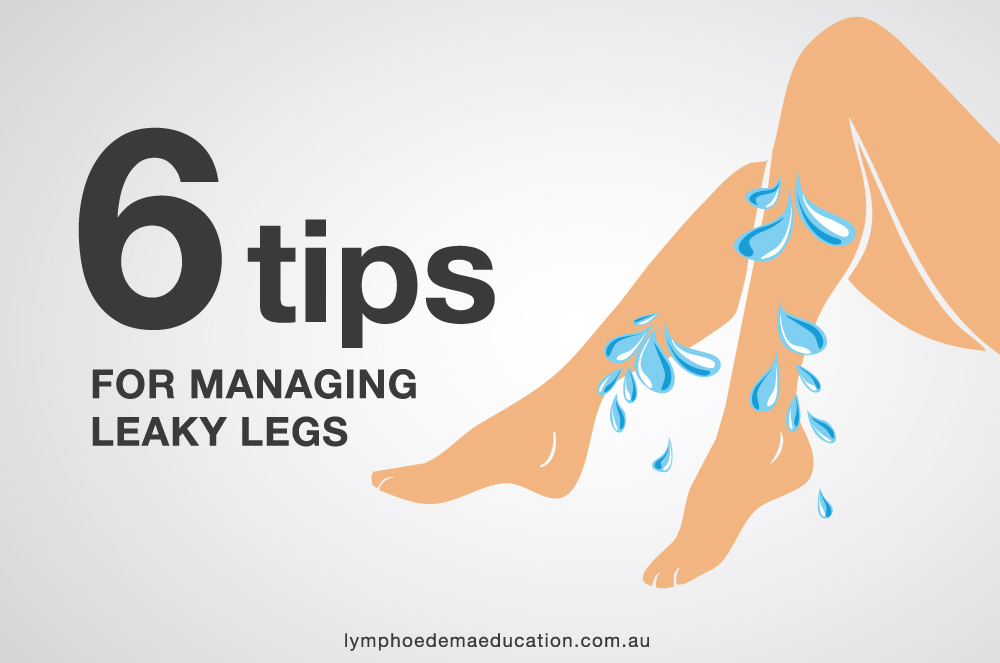6 tips for managing leaky legs

The following are some great tips to assist with the management of leaky legs when treating lower-limb lymphoedema by Zoe Baldwin, Physiotherapist and Lymphoedema Team Leader at Mt Wilga Private Hospital.
1. Dressings don’t heal wounds
Dressings don’t heal wounds – instead they create an environment for optimal wound repair. It’s important to understand what the dressing is designed to do.
Lymphorrhoea can cause moisture related skin damage (maceration), which can lead to more widespread ulceration, especially if there is a chronic wound exudate present. For lymphorrhoea you will need to first consider absorbency as the primary function of the dressing. Then as the lymphorrhoea slows the focus becomes absorbency and protection. Finally you move to a protection phase which is particularly important if patients have vulnerable skin and receiving compression bandaging.
Note that lymphorrhea consists of protein (fibrin); water; white blood cells & plasma protein. As the water content of the exudate evaporates or is drawn away into the dressing the fibrin starts to dry. This results in a “gluey like” structure. When the dressing is removed this can cause trauma to the wound bed, particularly as the volume of exudate decreases with therapy. This is where a step down strategy is very important (i.e. dressings that have less absorbency but silicone interface to prevent skin trauma on removal).
2. Protect surrounding skin
Protect surrounding skin to prevent breakdown and ensure optimal hydration. Consider using a barrier film such as Cavillon cream on peri-wound area to prevent maceration.
3. Skin must be well hydrated (not wet)
The aim is to heal the ulceration/reverse skin changes and reduce the swelling.
- Epaderm or Dermaveen are parafin based creams and lotions help with the lipid and fatty acid structure on the epidermis which helps to stop water from evaporating through.
- Always look after intact skin when bandaging.
- Remove hyperkeratotic skin scales
- Treat eczema
- Emollient-based skin care regimen
- Encourage self-care & skin hygiene
4. Compression is king when managing lymphorrhoea
Adequate levels of compression will help leaking to cease. When compression becomes suboptimal we may see increased capillary leakage.
- When compression is optimal we see epidermal resurfacing.
- If you are not seeing resolution in lymphorrhoea, you may need to consider increasing the amount of compression applied to the leg.
- Super absorbent dressings should be used under compression to absorb exudate and prevent maceration.
5. Microdacyn or similar anti-microbial products helps to limit secondary fungal burden
Anti-microbial products help to:
- Reduce the microbial load and assist in creating an optimal healing environment
- Limit fungal overgrowth in skin folds
- Reduce inflammation, itch and irritation and improve rate of wound healing
6. Aggravators and irritators
Consider dealing with the following if you have red or inflamed tissue as this may be impacting closure of the wound:
- Bacterial or fungal infection
- Eczema
- Atopic dermatitis
- Circulatory / perfusion issues
- Dehydration
- Malnourishment


